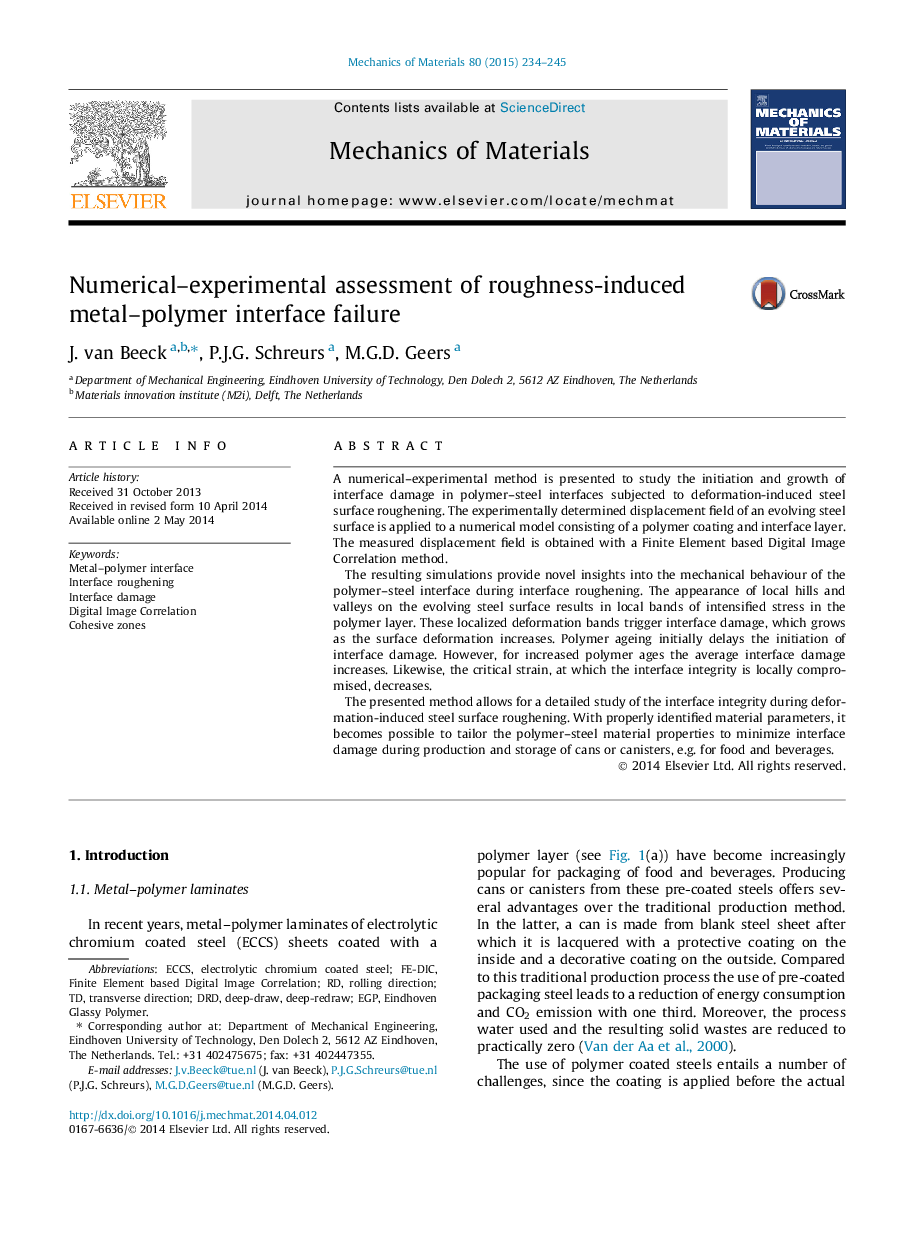| Article ID | Journal | Published Year | Pages | File Type |
|---|---|---|---|---|
| 800269 | Mechanics of Materials | 2015 | 12 Pages |
•Experimentally quantified evolving steel roughness applied in numerical simulation.•Local intensified stress bands appear in the polymer coating.•The localization triggers the initiation and growth of interface damage.•Polymer ageing plays an important role in the damage process.
A numerical–experimental method is presented to study the initiation and growth of interface damage in polymer–steel interfaces subjected to deformation-induced steel surface roughening. The experimentally determined displacement field of an evolving steel surface is applied to a numerical model consisting of a polymer coating and interface layer. The measured displacement field is obtained with a Finite Element based Digital Image Correlation method.The resulting simulations provide novel insights into the mechanical behaviour of the polymer–steel interface during interface roughening. The appearance of local hills and valleys on the evolving steel surface results in local bands of intensified stress in the polymer layer. These localized deformation bands trigger interface damage, which grows as the surface deformation increases. Polymer ageing initially delays the initiation of interface damage. However, for increased polymer ages the average interface damage increases. Likewise, the critical strain, at which the interface integrity is locally compromised, decreases.The presented method allows for a detailed study of the interface integrity during deformation-induced steel surface roughening. With properly identified material parameters, it becomes possible to tailor the polymer–steel material properties to minimize interface damage during production and storage of cans or canisters, e.g. for food and beverages.
